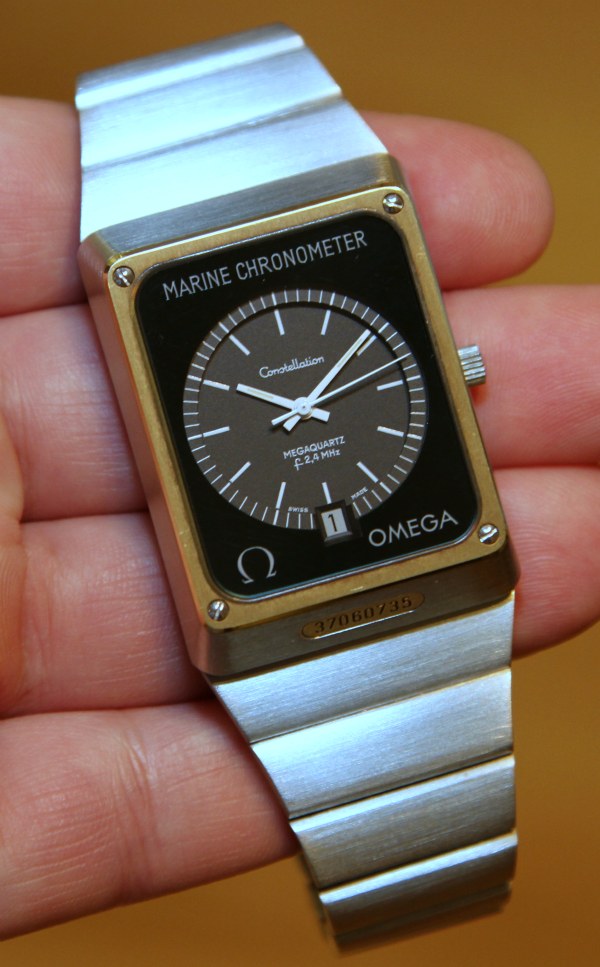
There are times that I wish I could have experienced the watch industry in the 1970s. Oh what an interesting time. Quartz regulated movements debuted in the late 1960s and was still an extremely expensive novelty which everyone was interested in, but no one quite knew what to do with. Mechanical watches still reigned supreme, and the era saw the creation of the modern sports watch as we know it. It was also a time of extreme optimism and experimentation from a design perspective. The world’s interest in space travel and futurism was at an all-time high, and product makers began to have more and more materials to play with. It was a good time marred by some ugly designs and outrageous ideas, but the overall sentiment seemed to be positive.
It was not until the 1980s when quartz-based timepieces became cheap enough to put a serious threat to the mechanical Swiss watch industry. Even during the late 1970s many Swiss watch makers saw it wise to totally abandon mechanical watches. They wanted their entire productions to be quartz. At the time it was thought by many people that mechanical watches were a thing of the past. I learned much of this traveling to Switzerland and listening to people discuss exactly what was going on and what they felt at the time. We now know that quartz and mechanical watches can coexist, but that is actually a modern concept.
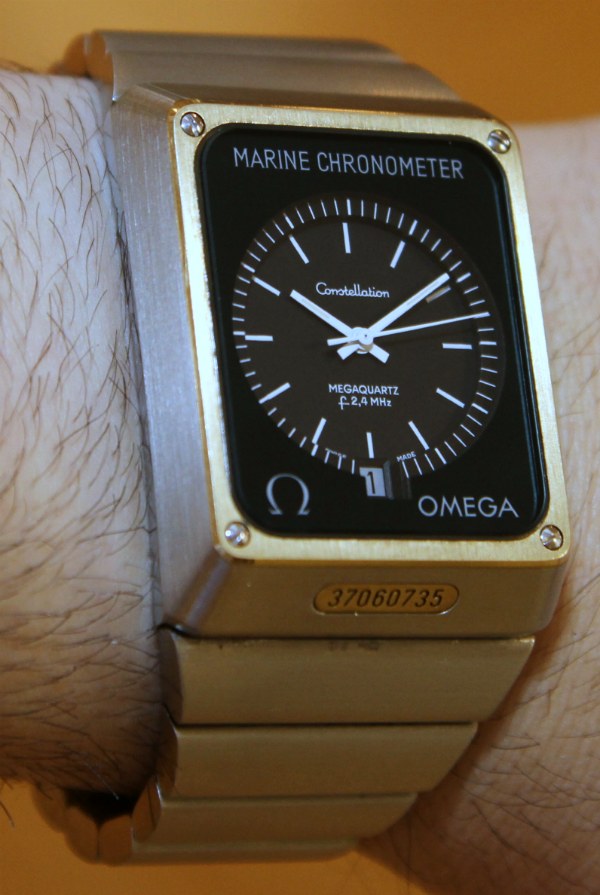
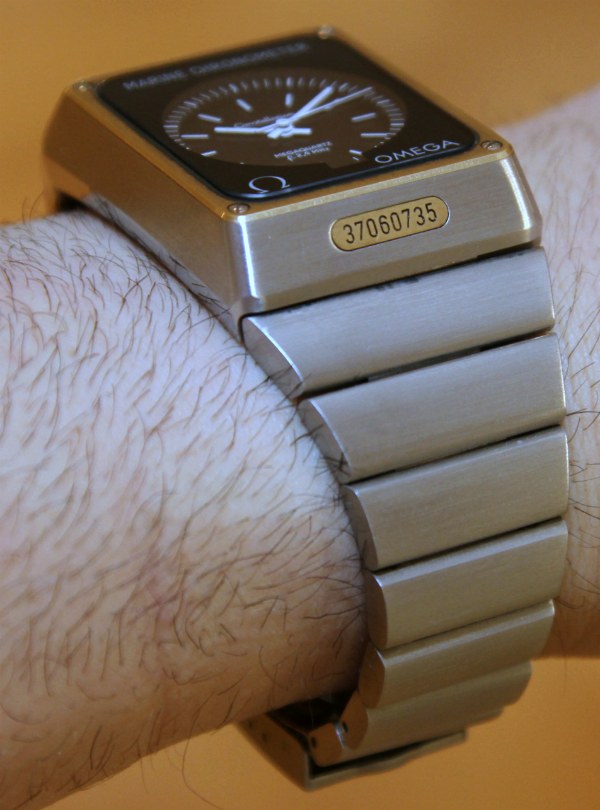
Anyhow, going back to the late 1960s and early 1970s, the largest Swiss brands were heavily invested in making their own quartz movements. These movements were anything but mass-produced and cheap. Often times requiring as much effort as a mechanical watch to assemble, these accurate electronic wonders were considered luxury items. You’ll probably never again see a Rolex watch proudly labeled “Quartz” on the dial. The same goes for Omega – who was considered by many to be a pioneer in quartz movement development.
In the late 1960s the Swiss and Japanese were aggressively trying to beat each other when it came to releasing the first quartz wrist watch. Seiko narrowly beat out the Swiss, and the Swiss followed up with a bevy of interesting high-end quartz models during the late 1960s and mostly into the 1970s. A very special one is the Omega Marine Chronometer.
There are a few people online how have laid out the technical history of the Omega Marine Chronometer better than I will ever be able to do (for example you can watch this YouTube video with images of the Marine Chronometer and a soundtrack that sounds like the guy wants to make love to the watch). I believe that it officially debuted for sale in 1974 and was available for a few years with a couple of movements variations all based on the quartz caliber 1500 series that was made by Omega.
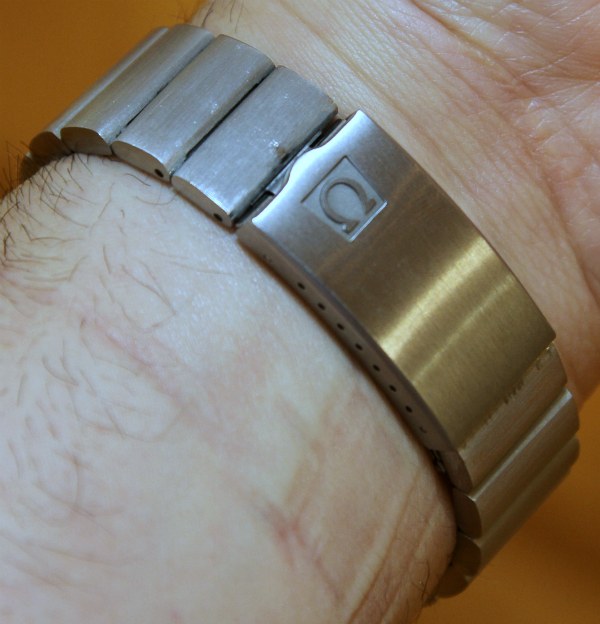
They called these movements “Megaquartz,” because of the frequency at which they ran was 2.4 MHz (mega hertz). These were also know as Megaquartz 2400 movements. One hertz is one cycle per second, so 2.4MHz is 2,400,000 cycles per second. This is extremely fast – and the faster a movement can operate the more accurate it will be. To put that into comparison, a standard quartz watch runs at about 32,768 hertz, and an average mechanical wrist watch movement such as the ubiquitous ETA 2824 automatic runs at 4 hertz. Can you notice how big those differences are?
I don’t know the precise accuracy rating of the Omega caliber 1500 megaquartz movements, but it was something like one second each 1000 years. To this day it probably remains the most accurate quartz movement every made. Something Omega pads itself on the back for accomplishing, but it does so quietly as the brand’s direction today is heavily on mechanical watches. The irony – that Omega themselves laugh about – is that the down-side of the Omega Marine Chronometer was its battery life. The movement sucked power such that a battery change was necessary each six months or so. That’s not horrible in today’s setting when the watch can be reset easily. But if you wanted the watch to be reliable for serious scientific purposes “out in the field,” you’d need at least two of them running, and you’d need to stagger the battery life as well as stockpile batteries. Just a fun fact about the caliber 1500 series movements.
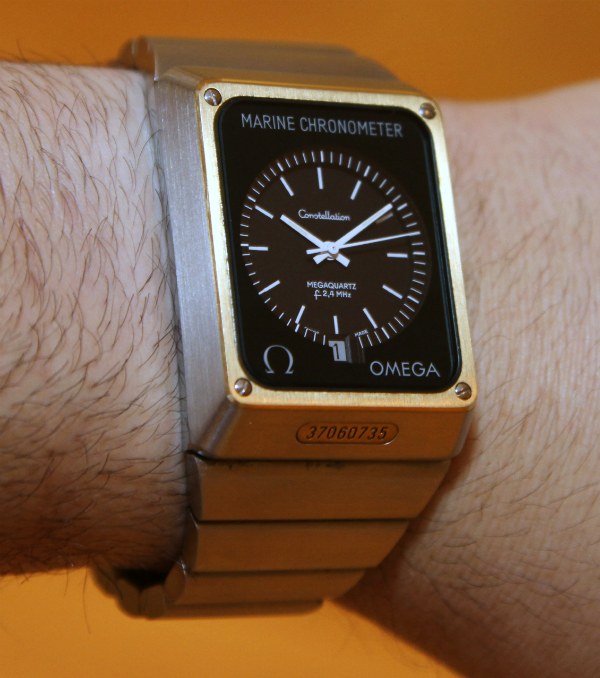
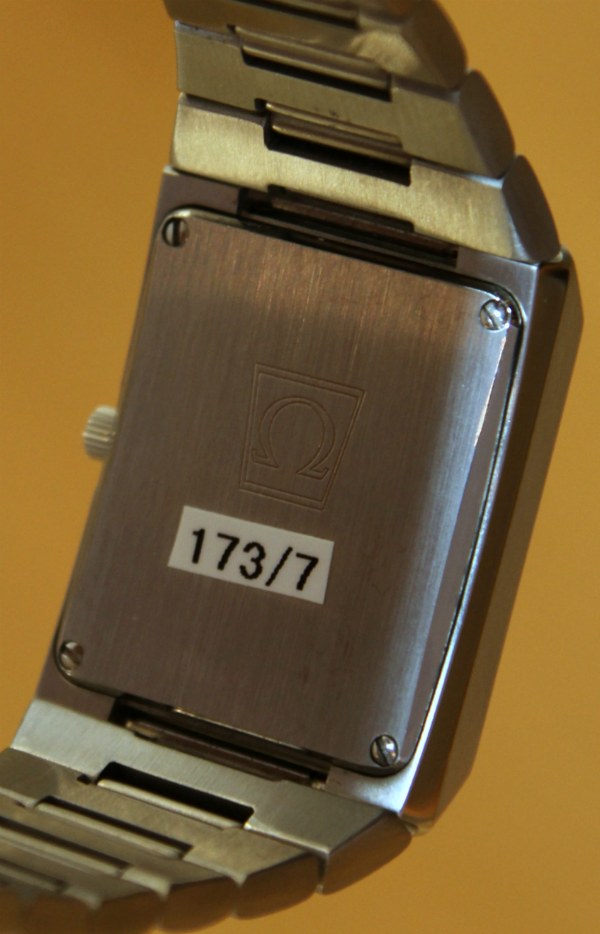
The 1500 series came in a few variants and were designed to fit into the rectangular case of the Marine Chronometer. I am still not sure why it has the “Constellation” name of the dial. New products tend to get complex branding I find. The design of the dial interests me. It looks like something plucked from an instrument panel. Imagine a series of gauges each with a different label. Here you are looking at the “Marine Chronometer” instrument. And what is it? Well an Omega Constellation with a sweet sounding high-tech movement. This watch thematically like the Bell & Ross BR01, in that it attempts place something from an instrument panel on your wrist. They even both have four bezel screws.
Reading the dial is simple as it is designed to be very minimalistic and devoid of excess. The round dial lack frills and is very utilitarian. Perhaps almost too much by some standards. Still, given the technology and purpose behind the movement I am glad that the face looks like a wall clock. The date is neatly tucked-in at six o’clock. Omega wanted its logo and name in large print on the face – now that is being proud of a watch! The large “Marine Chronometer” label on the top of the dial is sort of silly, especially looking at it in hindsight. The title isn’t necessary, but it is a charming quirk about the design and the concept of the watch overall.
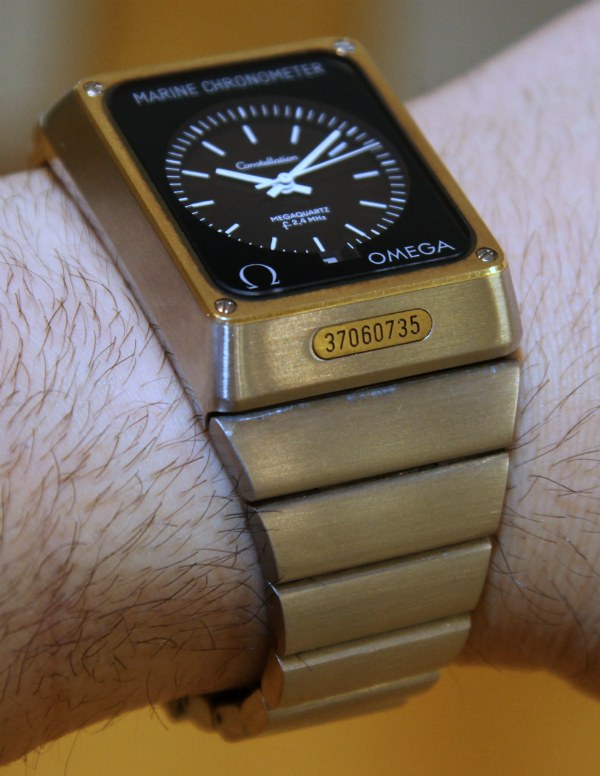
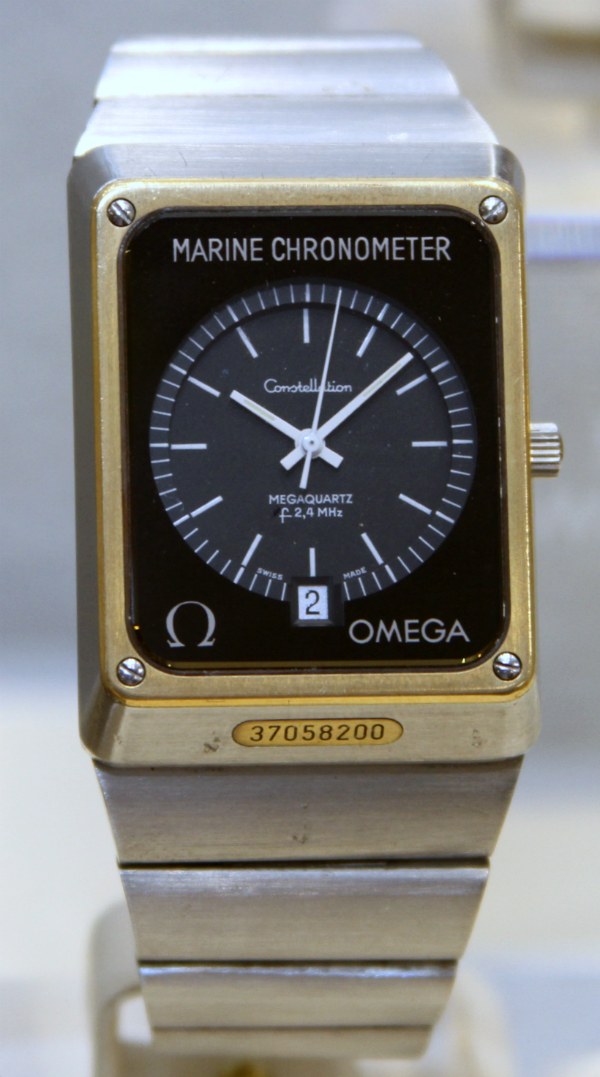
My understanding is that Omega only released one case style for the watch which was in steel with a 14k gold bezel and serial number plaque. The case is about 49mm tall and 32.5mm wide. It is 12mm thick and overall feels stately but not massive on the wrist. Retro by today’s standards a bit, the tapered single-link style bracelet and overall design does endure well in my opinion. I find it interesting that the serial number is so prominently displayed on the case. Another design feature intent on making it feel more like an important instrument rather than formal timepiece. This was a serious geek watch for its time.
Back in the mid 1970s the Omega Marine Chronometer was priced very high at $1,850. It was of course the only watch of its kind and pretty high-tech. Some more info on the Marine Chronometer can be found here as chronicled by the late Omega-expert Chuck Maddox. Today Omega Marine Chronometer watches are still out there. They aren’t terribly expensive, but do represent an investment in terms of adding one to your collection. I personally am really drawn to this unique watch and would gladly shell out to own one. It helps that I like how it looks on my wrist as well. Thanks to the good people at the Omega Museum for letting me play with it.
[phpbay]omega marine chronometer, num, “14324”, “”[/phpbay]